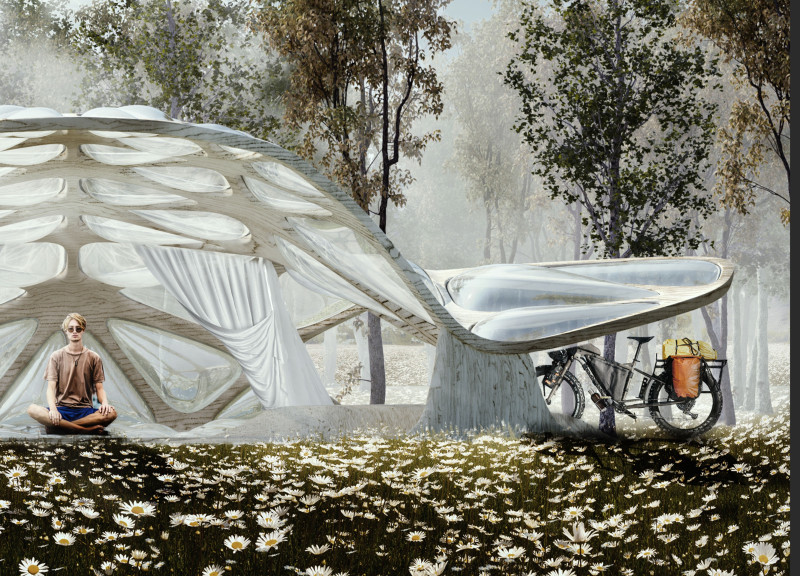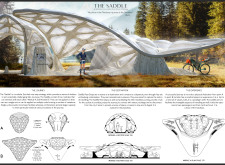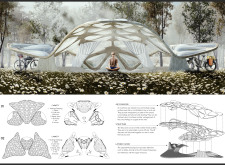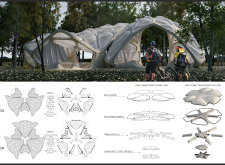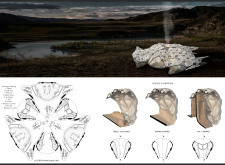5 key facts about this project
The Saddle is an architectural design project that proposes modular rest stop structures specifically for cyclists traversing the EuroVelo cycling routes in Europe. This project focuses on creating functional spaces that cater to the needs of cyclists, providing resting, maintenance, and socialization areas in scenic outdoor environments. The design is underpinned by principles of sustainability and adaptability, with each module able to be configured to meet the specific requirements of various locations.
Innovative Modular Design The project features two primary modules, known as Module A and Module B, which can be interlocked to create versatile configurations. Module A accommodates one seating area, two tables, and three cycle racks, while Module B offers a combined seating/sleeping area along with additional amenities like an air pump station and repair area. This modularity ensures that the structures can be easily transported, assembled, and adjusted as needed, making them suitable for various terrains and cyclist needs.
The design uniquely emphasizes lightweight and sustainable materials. The use of air cushions provides flexible seating options, while CNC milled timber profiles and layered plywood form the structural components, ensuring robustness without compromising on aesthetics. Steel profiles are integrated to ensure secure connections between different modules, providing stability within the architecture. The combination of these materials not only enhances the durability of the structures but also establishes an environment that remains connected to its surroundings.
Functional Integration and Experience The functional areas of The Saddle are specifically designed to address the practical needs of long-distance cyclists. Apart from the seating and sleeping arrangements, amenities include dedicated repair areas and hygiene facilities such as water closets and showers. These features enhance the overall experience for travelers, promoting not only rest but also community interaction among cyclists.
A distinctive characteristic of this project is its harmonious integration with the natural landscape. The fluid forms of the architecture mirror elements found in nature, creating an inviting environment that encourages interaction and exploration. The transparent quality of the air cushions fosters visual connectivity with the surroundings, reinforcing the relationship between the built form and the natural world.
The Saddle exemplifies an architectural approach that prioritizes user experience, environmental sensitivity, and modular flexibility. Its design seeks to redefine the cyclist's journey, transforming essential stops into meaningful destinations. By exploring architectural plans, sections, and designs, readers can gain further insights into this project's vision, materials, and overall architectural ideas. This examination reveals how The Saddle stands as a model for future infrastructural developments aimed at promoting cycling culture and enhancing outdoor experiences.


